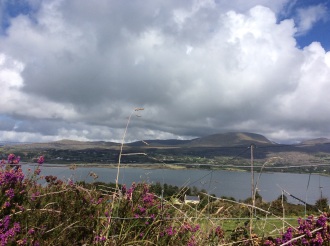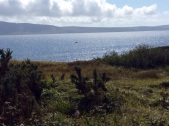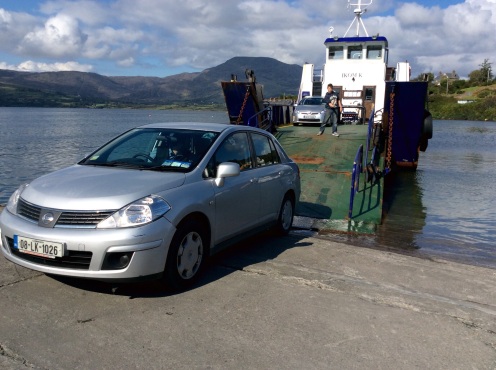 Ireland enjoys a worldwide reputation for producing top class thoroughbred horses that consistently achieve international success. The largest producer of thoroughbreds in Europe, Ireland ranks as the fourth largest in the world. This success is attributed to our temperate climate and calcium-rich soil that is good for young animals. It has long been on my ‘to do’ list to visit the Irish National Stud in Kildare and I finally managed to tick this box the other week. What a treat it was on a beautiful sunny day!
Ireland enjoys a worldwide reputation for producing top class thoroughbred horses that consistently achieve international success. The largest producer of thoroughbreds in Europe, Ireland ranks as the fourth largest in the world. This success is attributed to our temperate climate and calcium-rich soil that is good for young animals. It has long been on my ‘to do’ list to visit the Irish National Stud in Kildare and I finally managed to tick this box the other week. What a treat it was on a beautiful sunny day!
The Irish National Stud and Gardens belongs to the people of Ireland. Established in 1900 by Colonel William Hill Walker, a wealthy and somewhat eccentric Scotsman who bought 1,000 acres in Tully Co Kildare to establish a stud farm.
 This statue of Colonel Walker, unveiled by President Higgins in 2015, portrays him looking at the items in the tree of life that interested him. In addition to racing, we can see signs of the zodiac which informed much of his horse breeding. He was also interested in gambling as indicated by the playing cards!
This statue of Colonel Walker, unveiled by President Higgins in 2015, portrays him looking at the items in the tree of life that interested him. In addition to racing, we can see signs of the zodiac which informed much of his horse breeding. He was also interested in gambling as indicated by the playing cards!
 Col. Walker also loved horticulture and it was under his direction that the world famous Japanese Gardens were created here between 1906 and 1910, by the Japanese Craftsman, Tassa Eida.
Col. Walker also loved horticulture and it was under his direction that the world famous Japanese Gardens were created here between 1906 and 1910, by the Japanese Craftsman, Tassa Eida.
Having enjoyed some success in racing circles, including winning the prestigious Epsom Derby, Walker gifted his stud farm to the British Government in 1915, to form the basis of the British National Stud. Their success continued with the stud producing the winners of all classics and in 1942, Sun Chariot, born and bred at Tully, landed the fillies’ Triple Crown – the 1,000 Guineas, Oaks and St. Leger – for King George VI. However, in 1946, the by now independent Irish Republic took over the ownership and running of the redesignated Irish National Stud. Although the acreage of the stud has now been reduced by about a hundred acres because of road building, this place continues to produce top class bloodstock that makes their mark the world over. Many famous racehorses are retired here, excellent stallions stand here and foals are bred here.
Of the retired horses, or ‘Living Legends’ as they are known, even I as a non-racing person, recognized many of the names.
This lovely fellow is Hurricane Fly, trained by Willie Mullins. He is the holder of the world record for most Grade 1 races won by any racehorse. His paddock mate is Hardy Eustace, a very famous 21-year-old.
In the paddock are another three retired ‘living legends’, including Beef or Salmon, seen below on the right. Beef or Salmon was trained in Limerick by Michael Hourigan. Also here are Kicking King and Rite of Passage. These are world-class racehorses, living out their retirement in luxury on buttercup filled meadows! Until his death a few years ago, the world-famous Vintage Crop grazed here too – he was the 1993 winner of the Melbourne Cup – the first foreign-trained horse to do so. All of the ‘living legends’ are geldings and are people friendly lovers of sugar cubes. (Unlike the stallions that would attack)

In a paddock nearby are some of the new season foals standing with their mothers. All foals have a birthday of January 1st, regardless of when they are born. This determines the categories of races they may enter.
 In addition to the Japanese Gardens, the grounds are beautifully enhanced by St. Fiachra’s Garden just opposite the paddocks of the retired famous boys. These gardens were looking great at the time of my visit and are delightful for walking and are formed on a reclaimed wetland.
In addition to the Japanese Gardens, the grounds are beautifully enhanced by St. Fiachra’s Garden just opposite the paddocks of the retired famous boys. These gardens were looking great at the time of my visit and are delightful for walking and are formed on a reclaimed wetland.
Here too are some reconstructed Beehive huts similar to those found in Kerry.
But it is hard to beat nature in all her glory!

This route leads to the area where the Stallions are kept. Potentially very dangerous animals, they are contained between two layers of fencing.

Invincible Spirit in his buttercup rich paddock
Meet Invincible Spirit – he is grazing there in his meadow the background. This is the current king of the National Stud whose offspring can sell for millions. With stud fees of €120,000 a session, he is kept busy and covers many mares, making him the highest earner hereabouts, providing 80% of the total annual income of the stud.

The stabling is ‘high end’ as these horses are living in the lap of luxury with this yard named after the famous Sun Chariot.
And so to the Museum. I was thrilled to bits to find Arkle here – although it was only his skeleton. Arkle was a remarkable racehorse, a real legend, one of the greatest racehorses that ever lived, one that we were familiar with in the 1960s and one that had a personal impact on our house. My younger sister Eva recalls someone coming to look for her one day when she was about 8 or 9. We children tended to roam about and wander from house to house in the village, coming home only when we were hungry about mealtime. She was eventually located and told that our father wanted her at home immediately. She hesitated thinking she was in trouble of some sort, but when she reluctantly arrived at the house she was informed that she had won a white Bush Television in a draw because she had chosen Arkle as her horse, who had gone on to win whatever the race was. And here was the wonderful Arkle, the main exhibit in the museum, who provided us with a TV when they were something of a rarity in our neck of the woods.

The skeleton of the legendary Arkle – he supposedly loved to drink Guinness.
Not only did Ireland introduce Steeplechasing to the world, but we see in the museum that we also introduced showjumping – the first showjumping competition in the world was held in Dublin in 1868. In 1937 Ireland became the first country to have three successive wins and win the 2nd Aga Khan Trophy outright In 1937. (Switzerland had previously won the 1st trophy outright by winning three times, but not successively) .

The Aga Khan Trophy
This jockey weighing -in chair was interesting and very ornate!

The visit to the National Stud was fascinating and so very worthwhile! Absolutely educational and in such wonderful surroundings.
Our father was ‘mad’ about horses and often drove about the country with my young daughter ‘looking; for horses in fields. They were often seen up on ditches peering at them or hanging over farm gates admiring them. He never put a bet on a horse in his life, but he loved them and passed that on to my daughter who became an accomplished rider, showjumper and dressage contestant. I am not sure if Dad ever got to the National Stud, but today on Father’s Day, I dedicate this post to him. He would love it. So would you!





























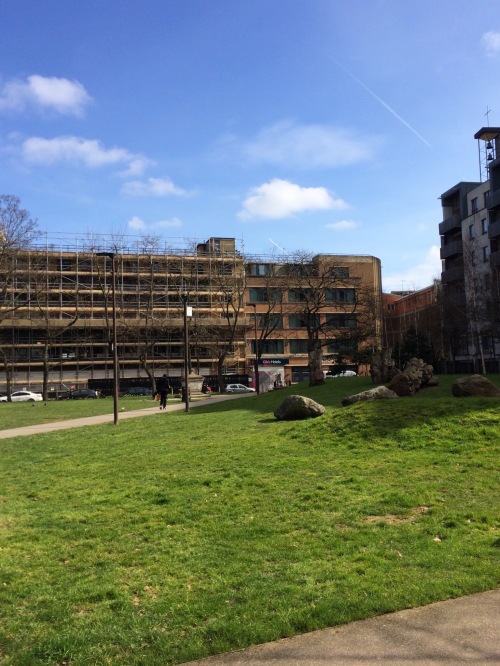





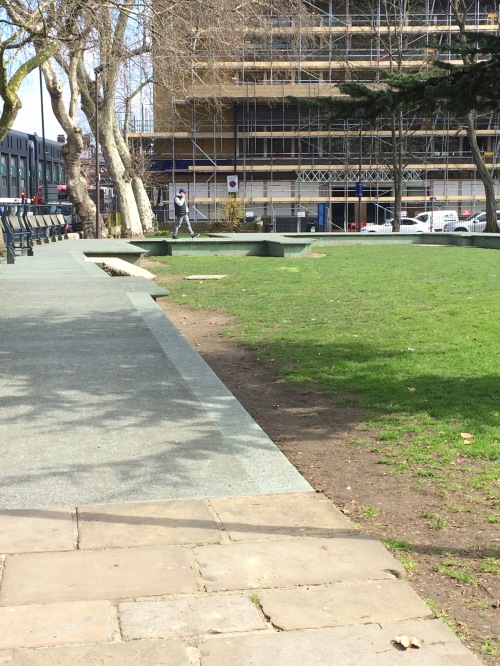





 In one corner of the park is the Shahid Minar, representing a mother protecting her children with the red sun behind. The Shahid Minar is also referred to as Martyr’s Monument. It has deep cultural and historical significance for Bengalis as it commemorates five Bengali students shot dead on 21 February 1952 in a demonstration in support of the right to use the Bengali language within Pakistan.
In one corner of the park is the Shahid Minar, representing a mother protecting her children with the red sun behind. The Shahid Minar is also referred to as Martyr’s Monument. It has deep cultural and historical significance for Bengalis as it commemorates five Bengali students shot dead on 21 February 1952 in a demonstration in support of the right to use the Bengali language within Pakistan.
 For years I have been travelling the torturous route between Limerick and Cork, the N20, surely one of Ireland’s worst major routes with single file traffic wending its way along through towns and villages, with serious sharp bends to be negotiated.
For years I have been travelling the torturous route between Limerick and Cork, the N20, surely one of Ireland’s worst major routes with single file traffic wending its way along through towns and villages, with serious sharp bends to be negotiated.
















































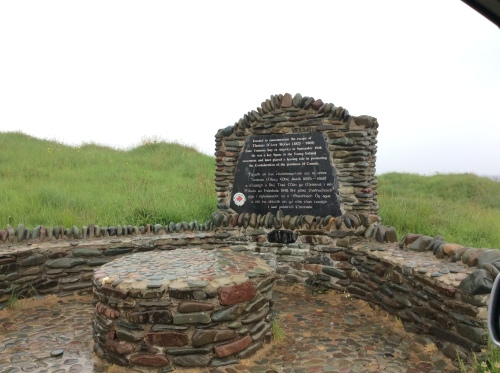
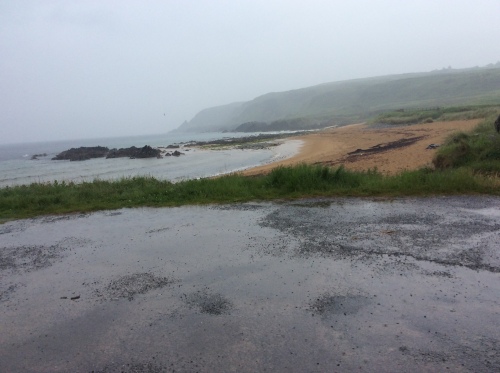









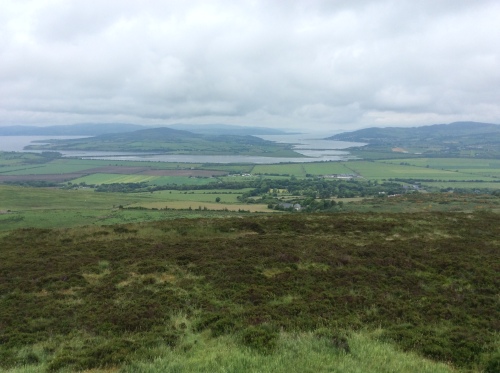






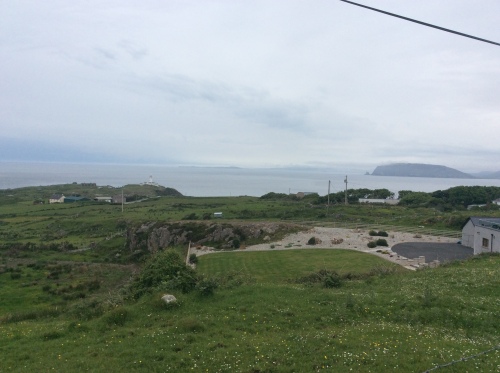



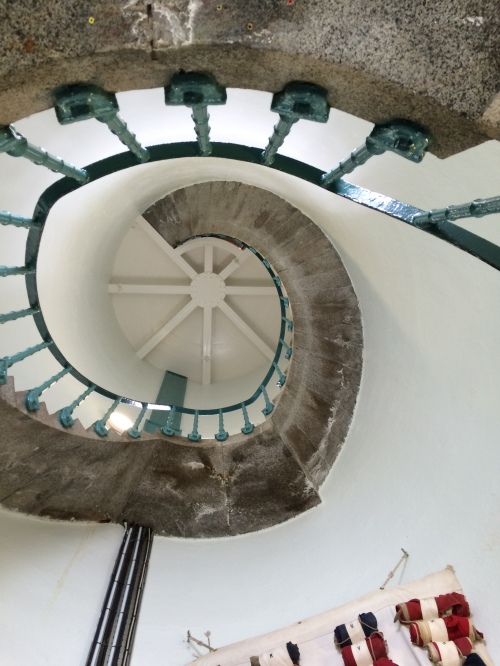




 Heading away towards Portsalon I enjoyed a catch up with a cousin before taking the very spectacular Glenalla Road that runs along the cliffs and shores of Lough Swilly. At Ballymastoker Strand is a memorial to the crew of HMS Saldanha shipwrecked in a storm off Fanad Head on 4 December 1811 with 253 aboard. It is thought she went aground on rocks when attempting to make for shelter in Lough Swilly. There were no survivors and for weeks afterwards some 200 or so bodies were washed up on the strand. Some months later a bird was shot about 20 miles away and it turned out to be the ships parrot with a silver collar engraved ”Captain Packenham of His Majesty’s Ship Saldanha”. (Packenham was a brother in -law to the Duke of Wellington of Waterloo fame). I wonder what happened to the collar! As a direct result of the loss of the Saldanha plans were drawn up to build a lighthouse at Fanad Head, which was turned on in March 1817.
Heading away towards Portsalon I enjoyed a catch up with a cousin before taking the very spectacular Glenalla Road that runs along the cliffs and shores of Lough Swilly. At Ballymastoker Strand is a memorial to the crew of HMS Saldanha shipwrecked in a storm off Fanad Head on 4 December 1811 with 253 aboard. It is thought she went aground on rocks when attempting to make for shelter in Lough Swilly. There were no survivors and for weeks afterwards some 200 or so bodies were washed up on the strand. Some months later a bird was shot about 20 miles away and it turned out to be the ships parrot with a silver collar engraved ”Captain Packenham of His Majesty’s Ship Saldanha”. (Packenham was a brother in -law to the Duke of Wellington of Waterloo fame). I wonder what happened to the collar! As a direct result of the loss of the Saldanha plans were drawn up to build a lighthouse at Fanad Head, which was turned on in March 1817.






















 I love this shot with the old-fashioned telephone box and the well populated sign post, while just across the road is this very colourful shop selling everything you might need for a really happy holiday!
I love this shot with the old-fashioned telephone box and the well populated sign post, while just across the road is this very colourful shop selling everything you might need for a really happy holiday!




 Here too is Ireland’s National Famine memorial, entitled ‘Coffin Ship’, a haunting bronze sculpture of a ship with skeletons as the rigging.
Here too is Ireland’s National Famine memorial, entitled ‘Coffin Ship’, a haunting bronze sculpture of a ship with skeletons as the rigging.








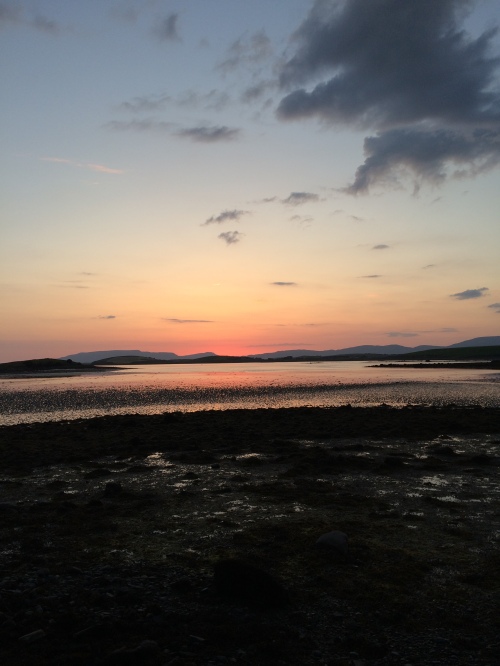
































































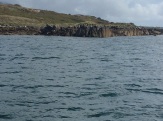



 There is a very rich archaeological heritage on the island, which is well signed.
There is a very rich archaeological heritage on the island, which is well signed.

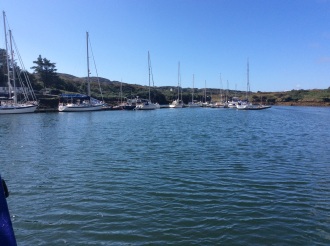

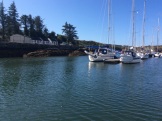






 Afterwards there was time for a whistle-stop tour of the island, but only after some delicious chowder in the Lookout restaurant. I loved the very unusual barometer that was hanging on the wall.
Afterwards there was time for a whistle-stop tour of the island, but only after some delicious chowder in the Lookout restaurant. I loved the very unusual barometer that was hanging on the wall.








